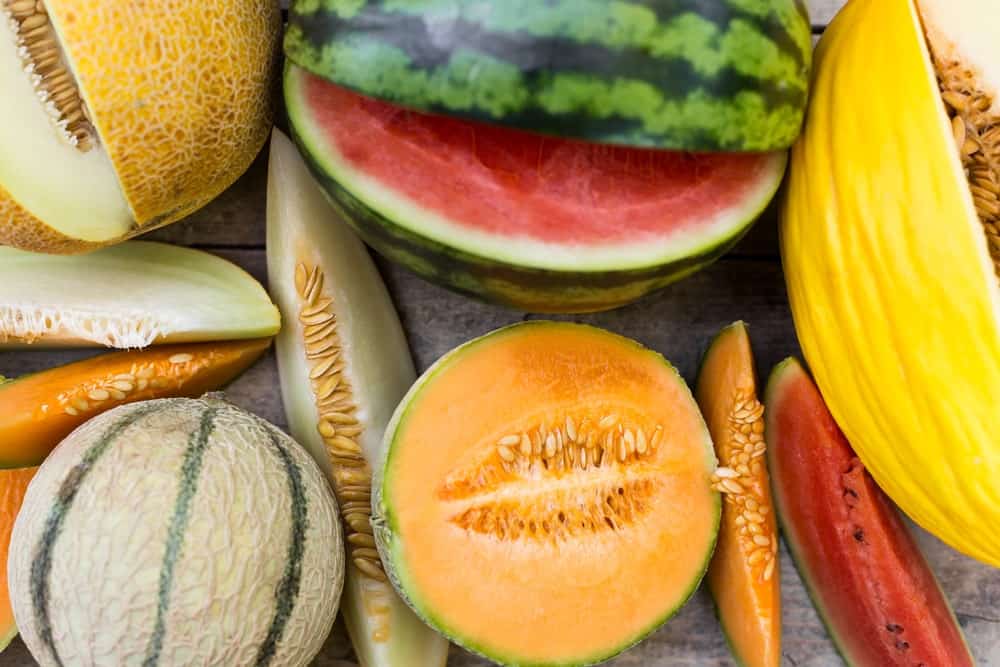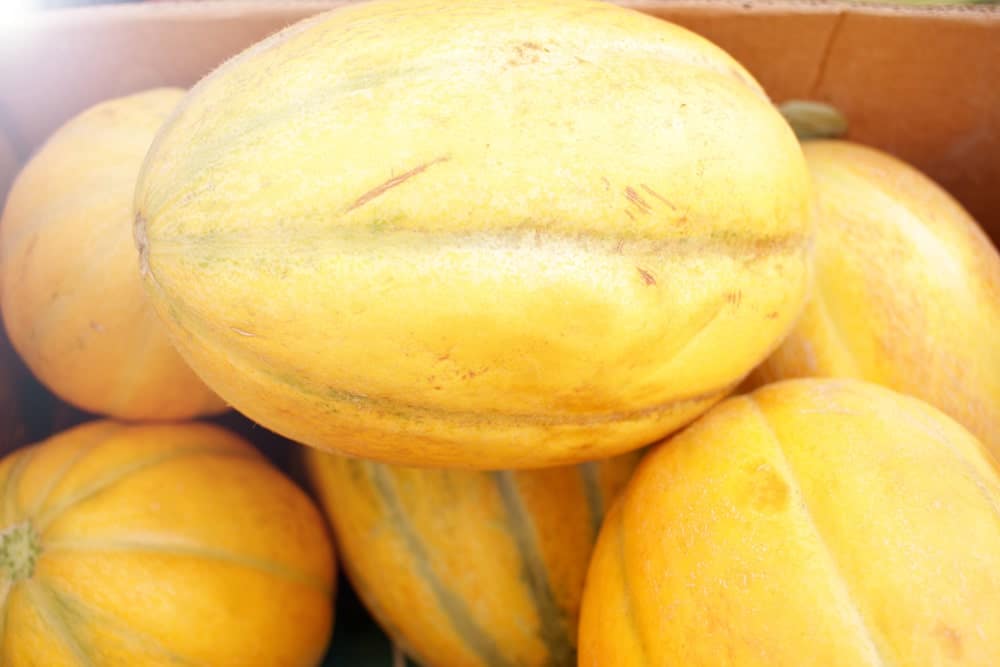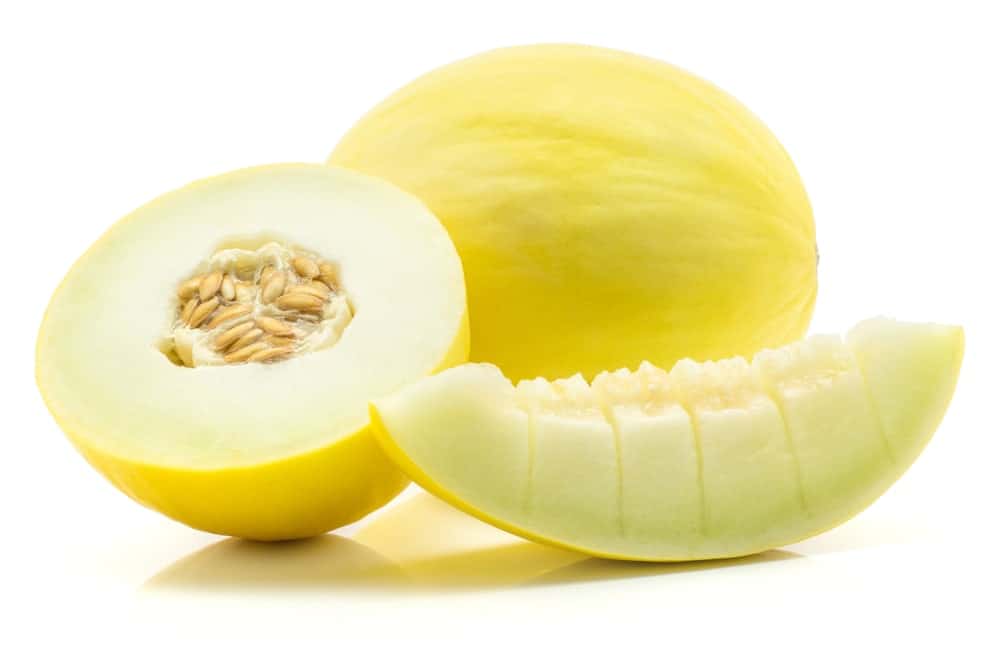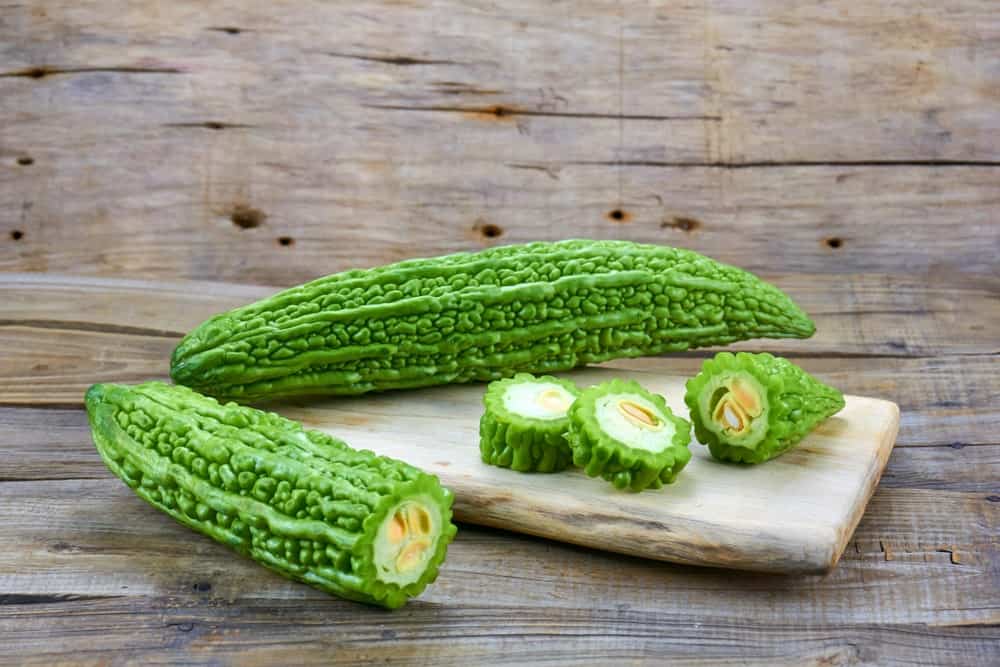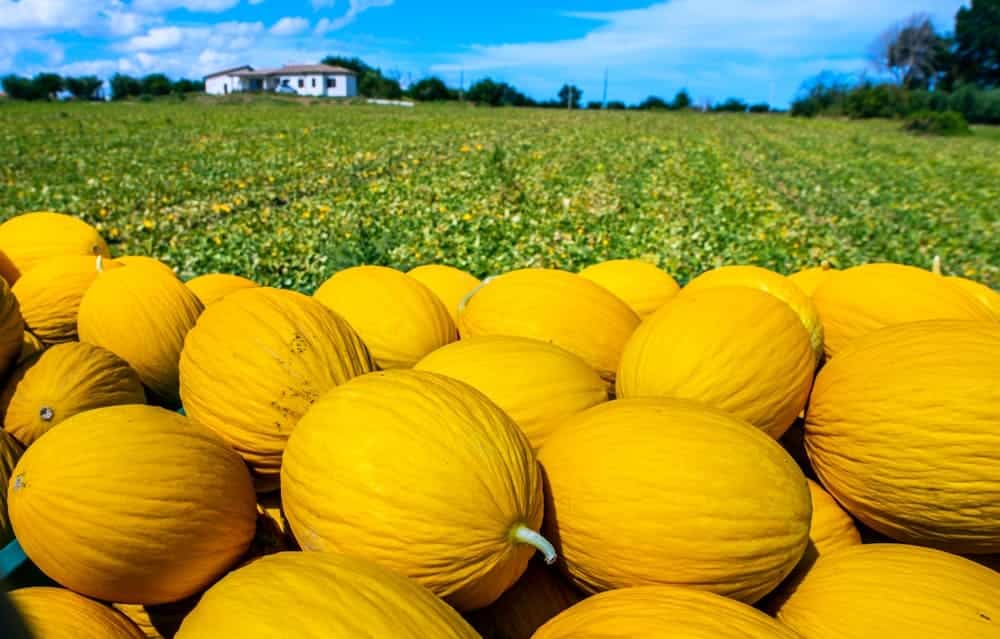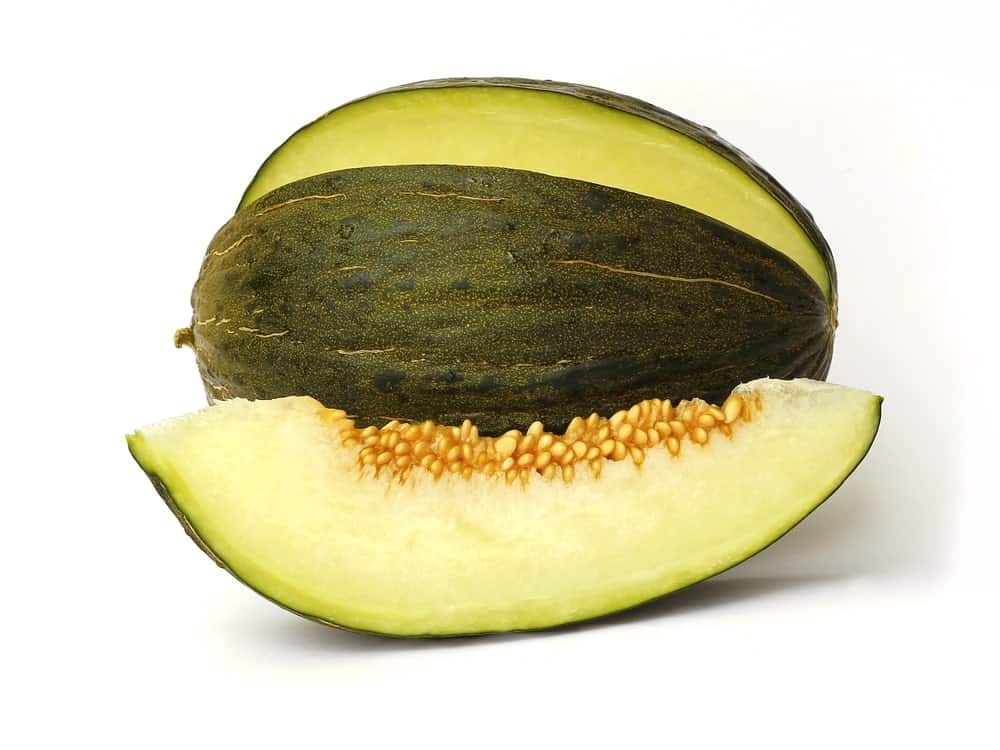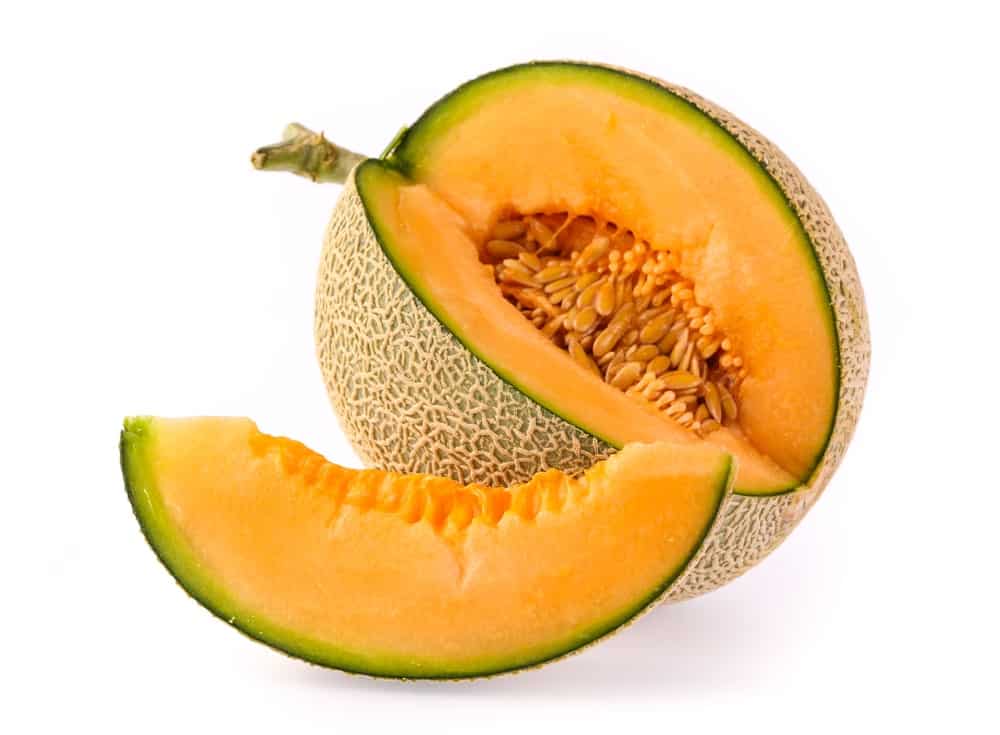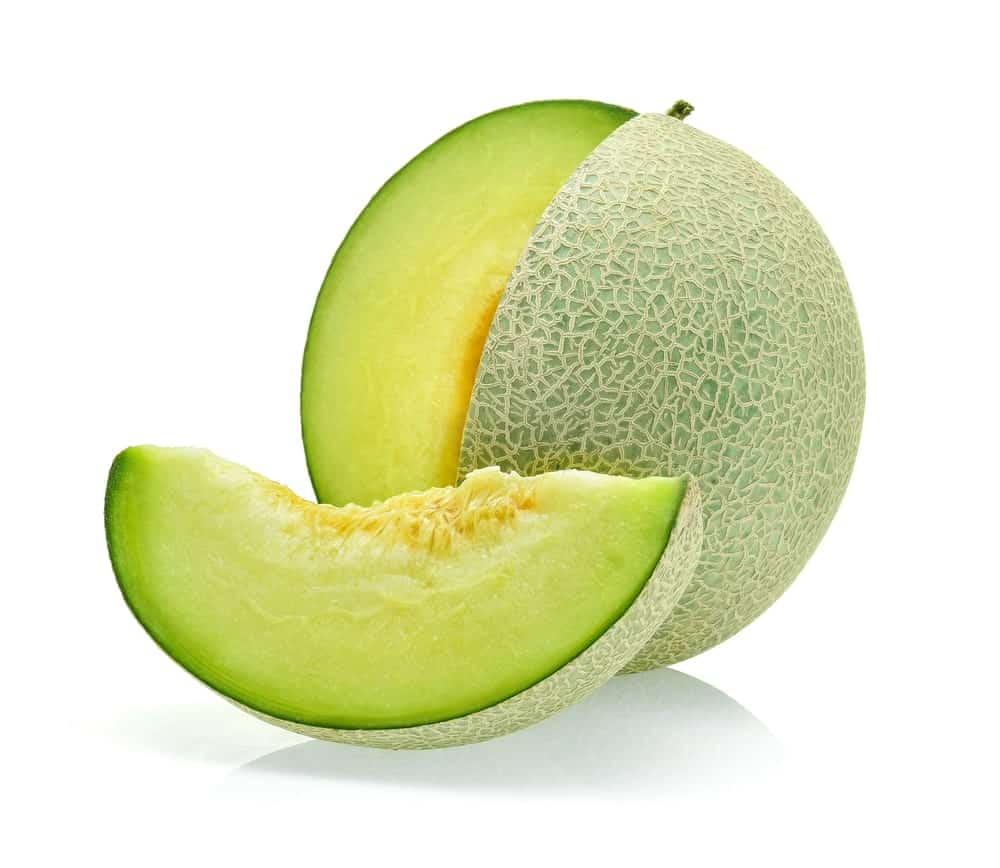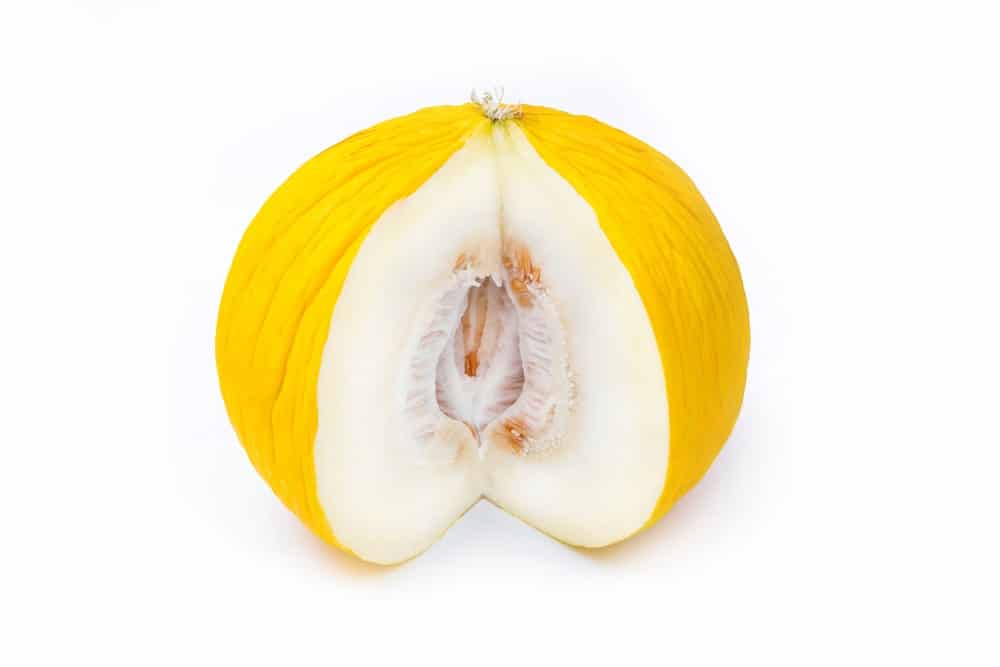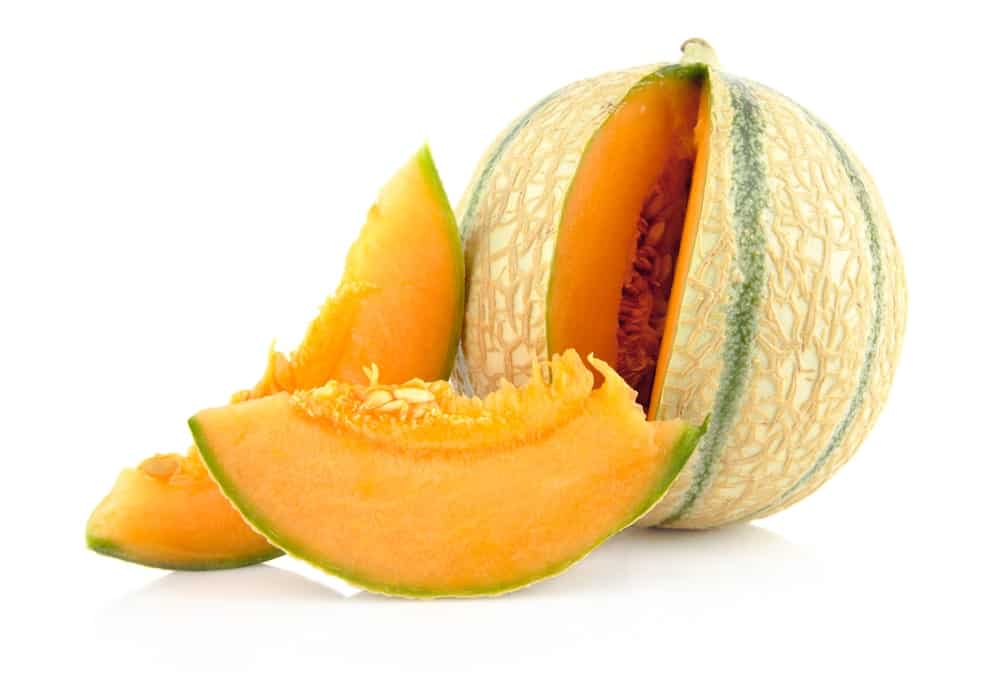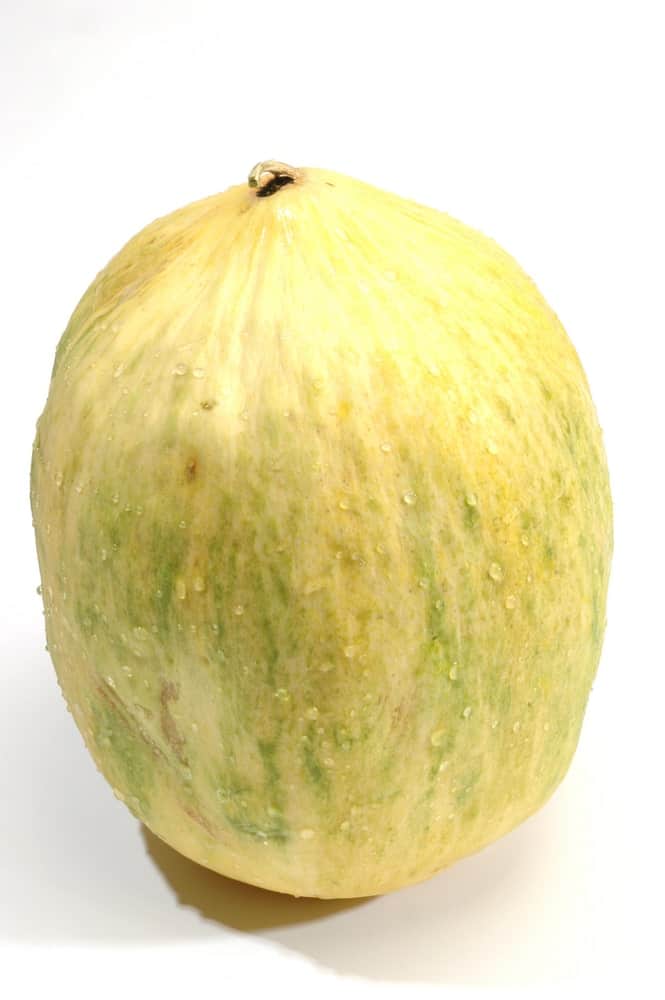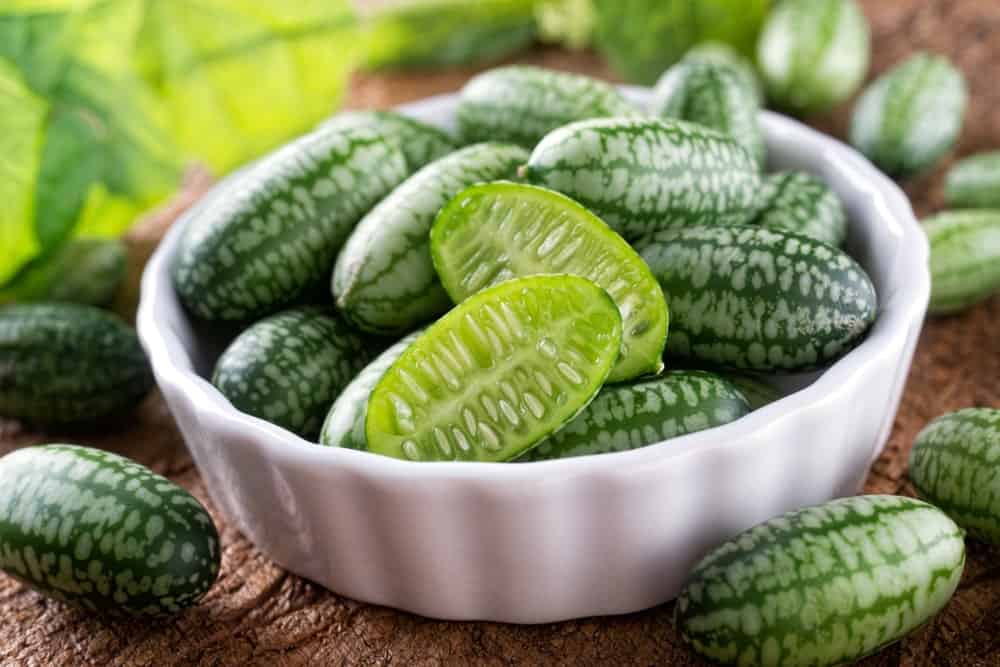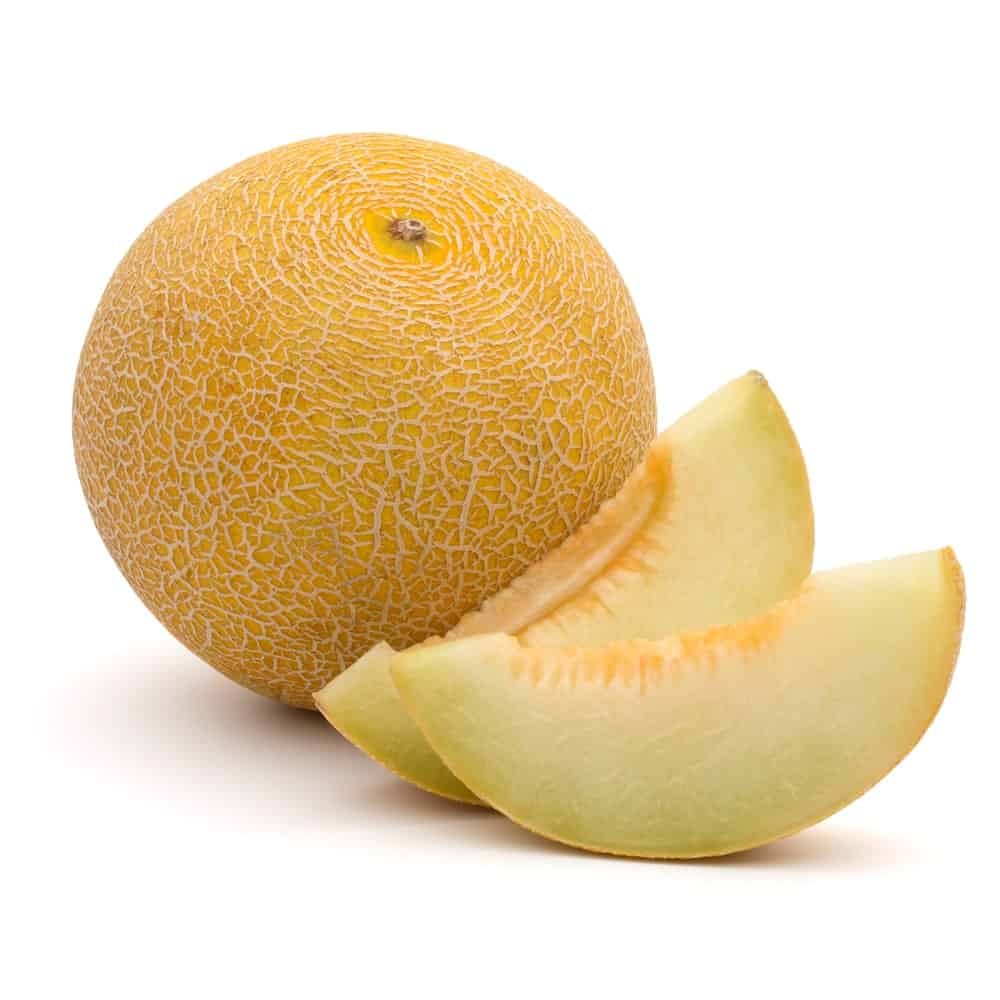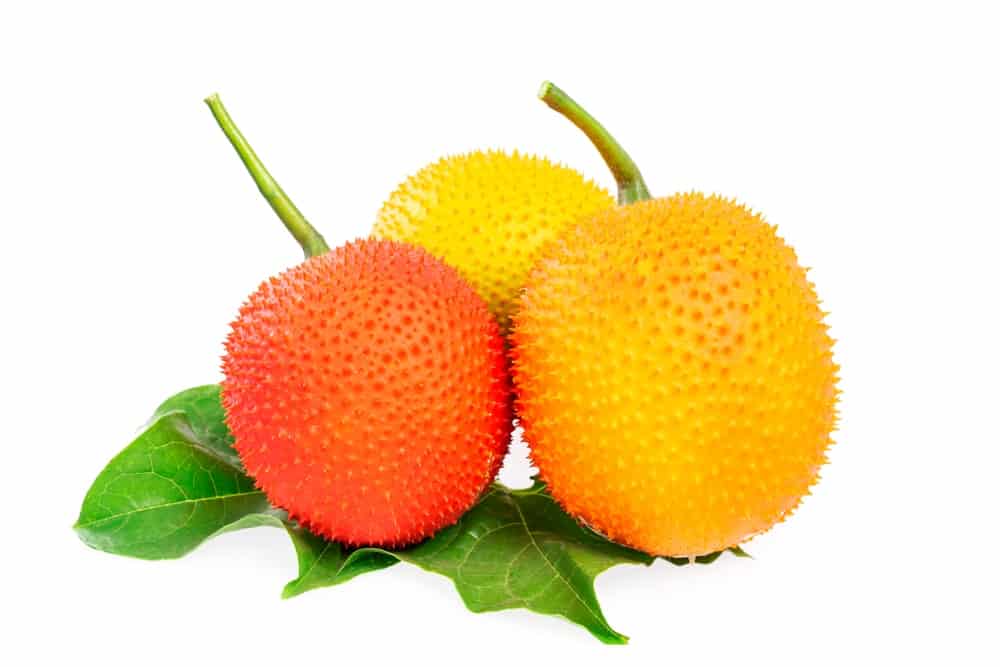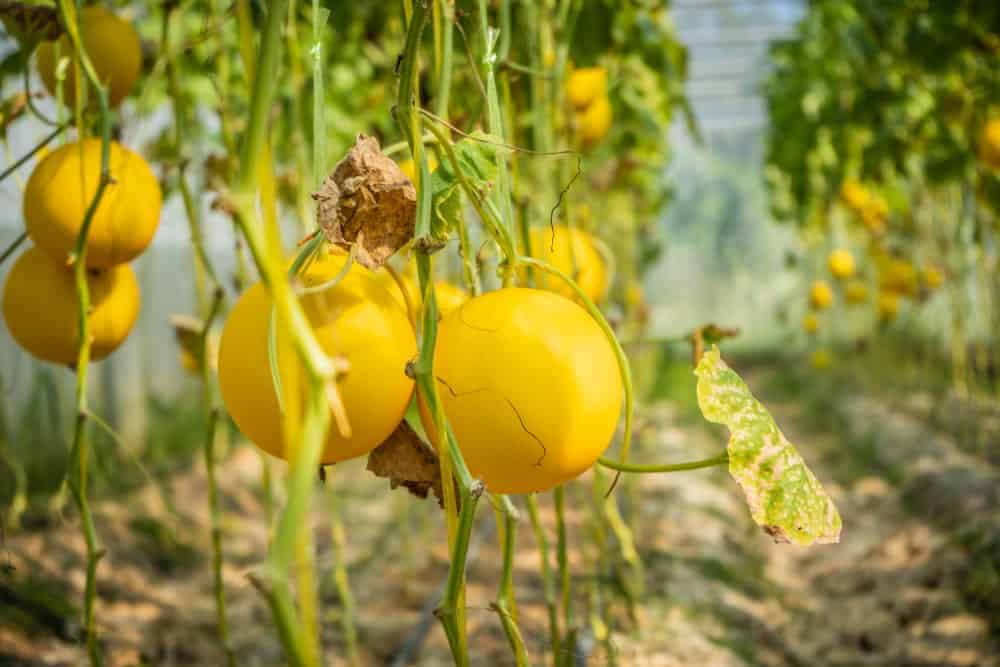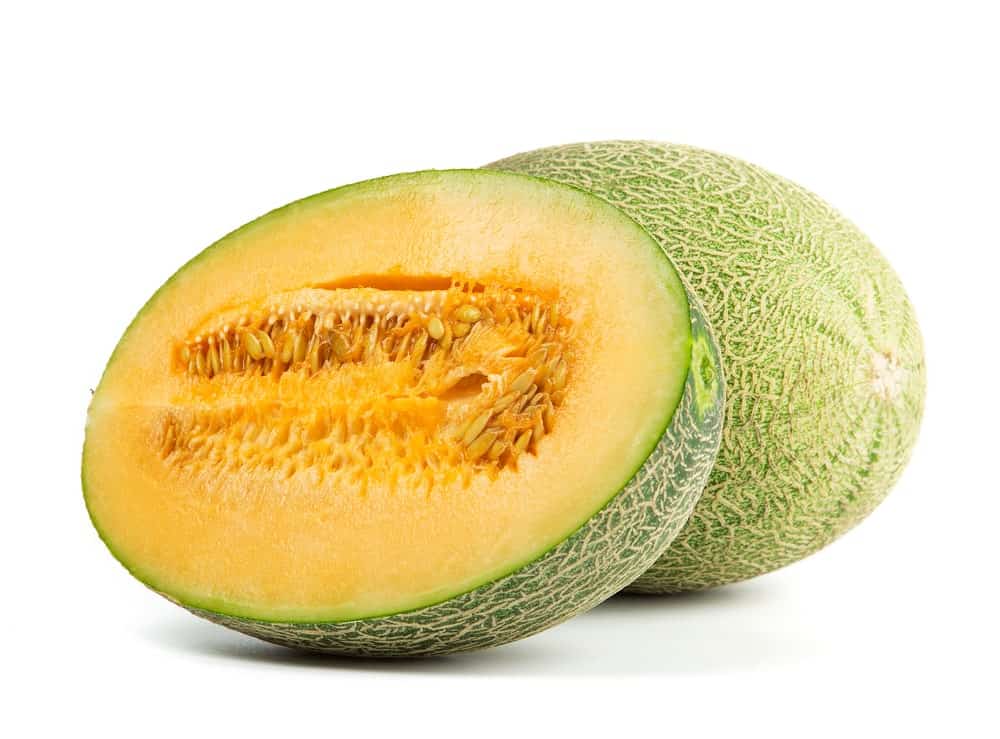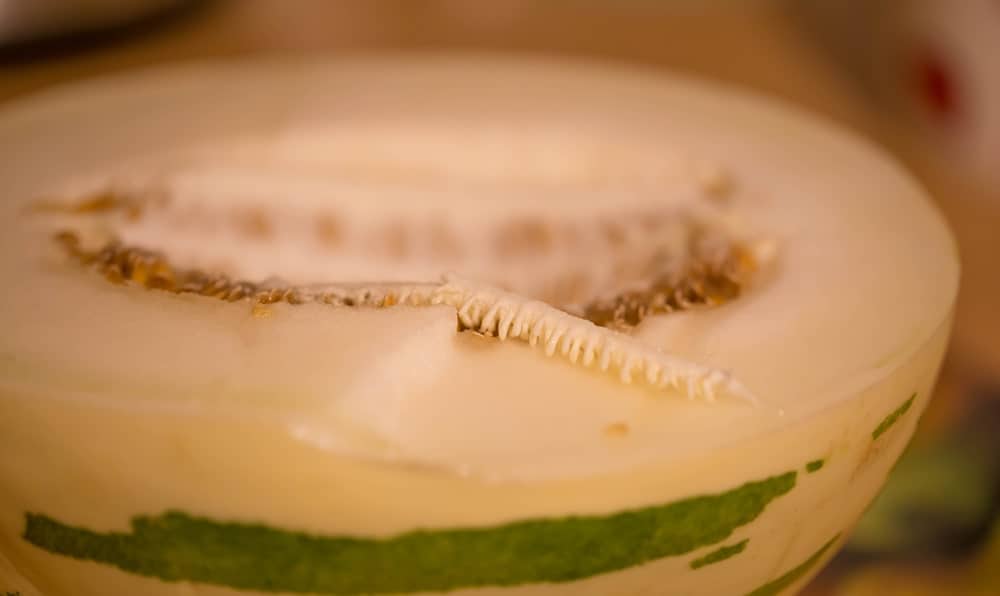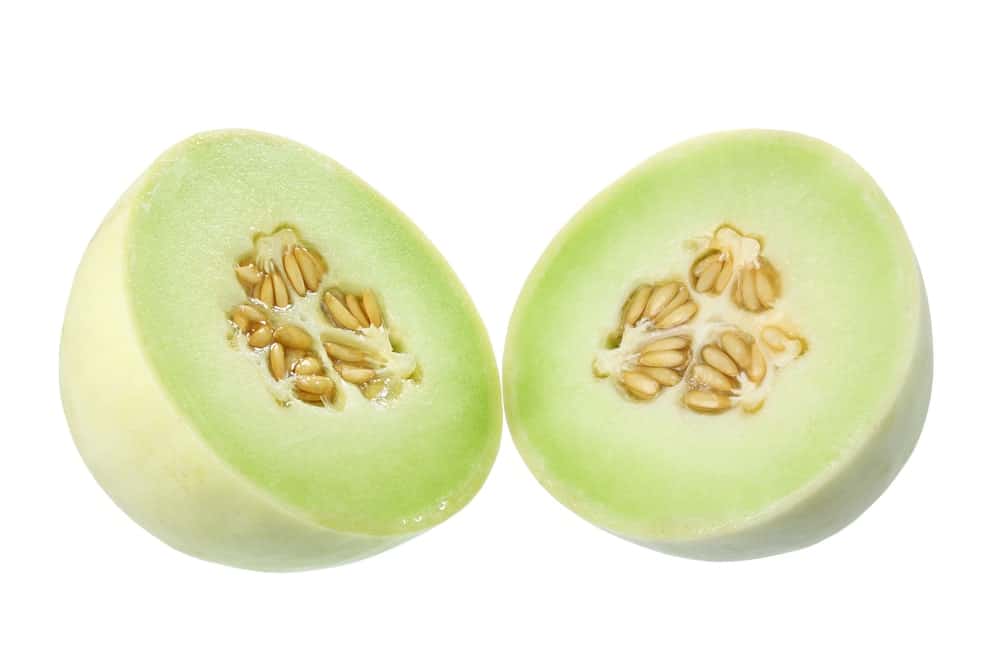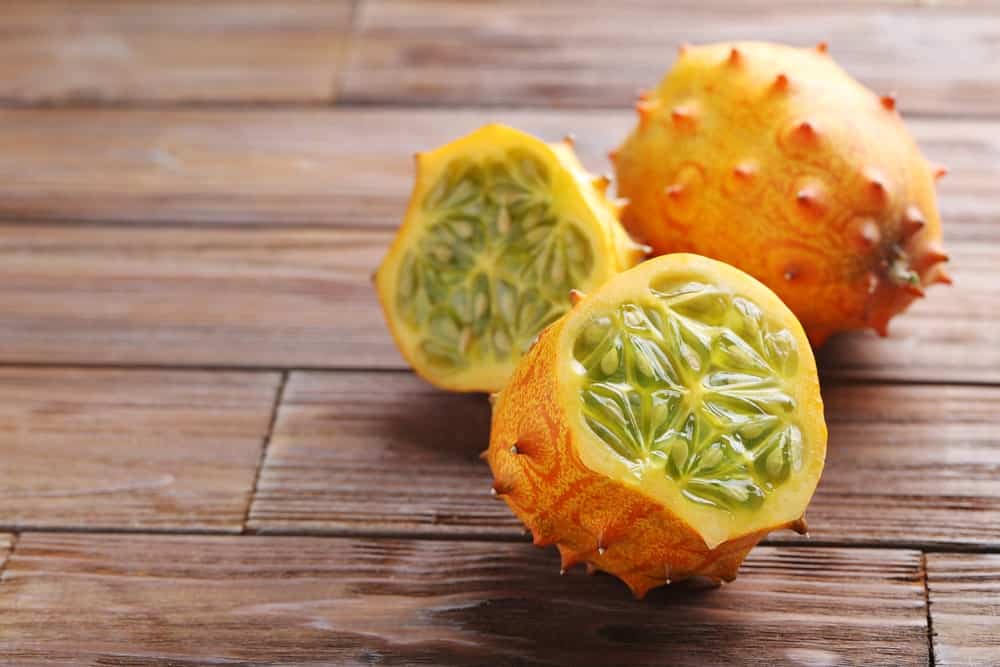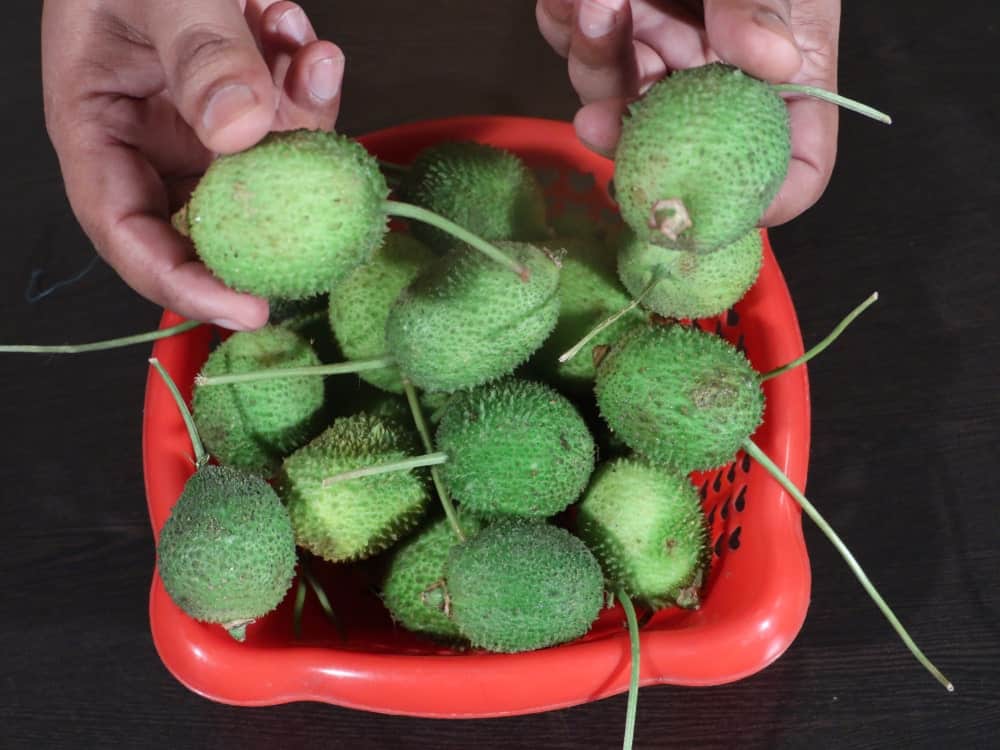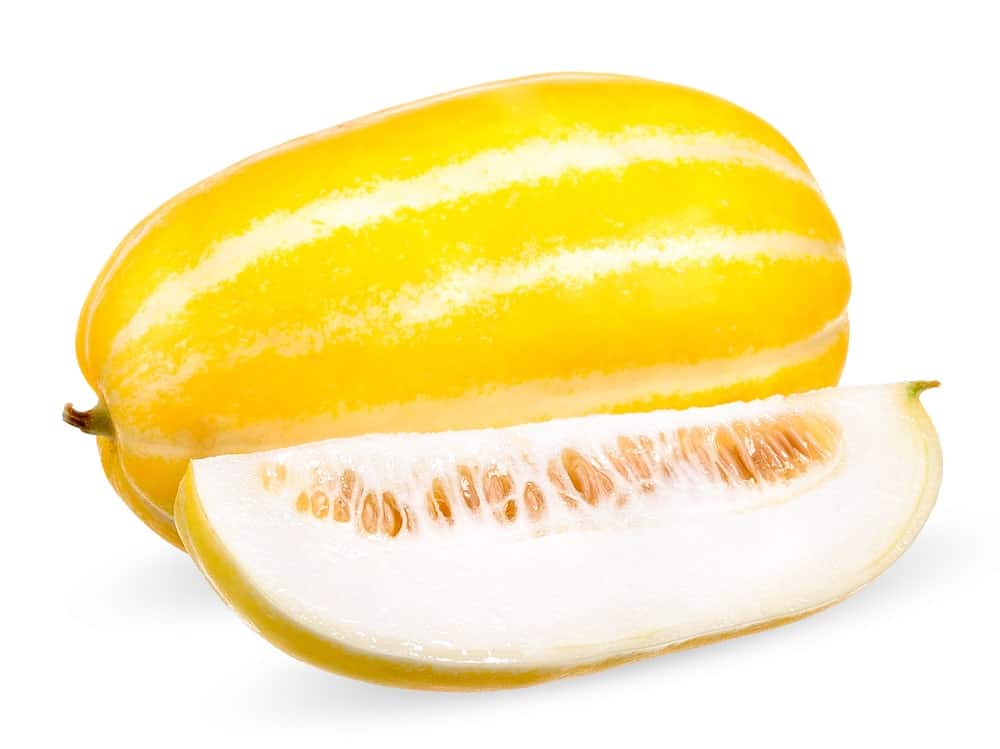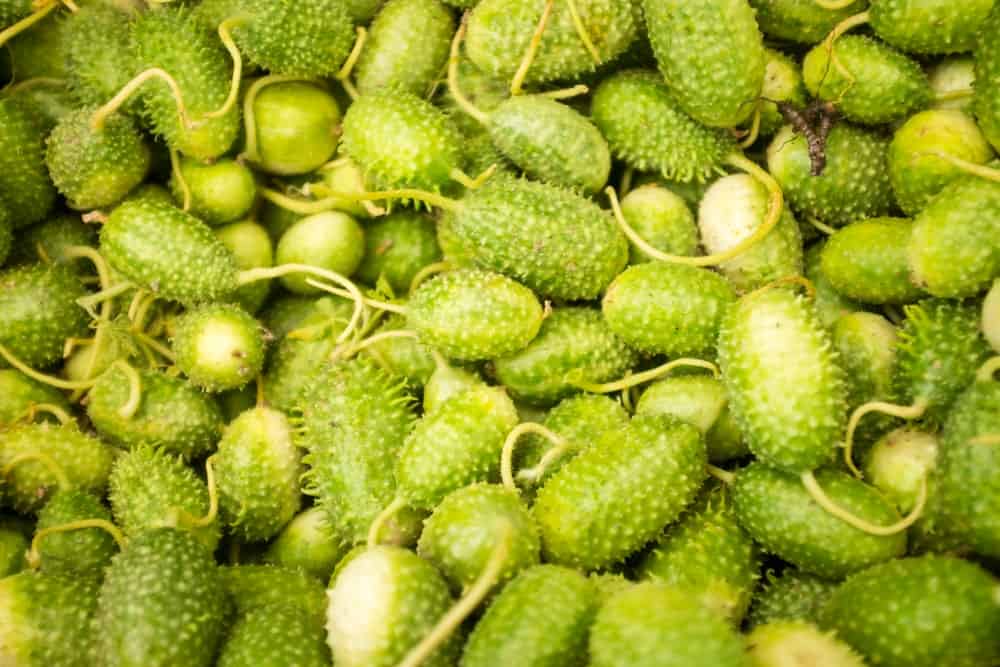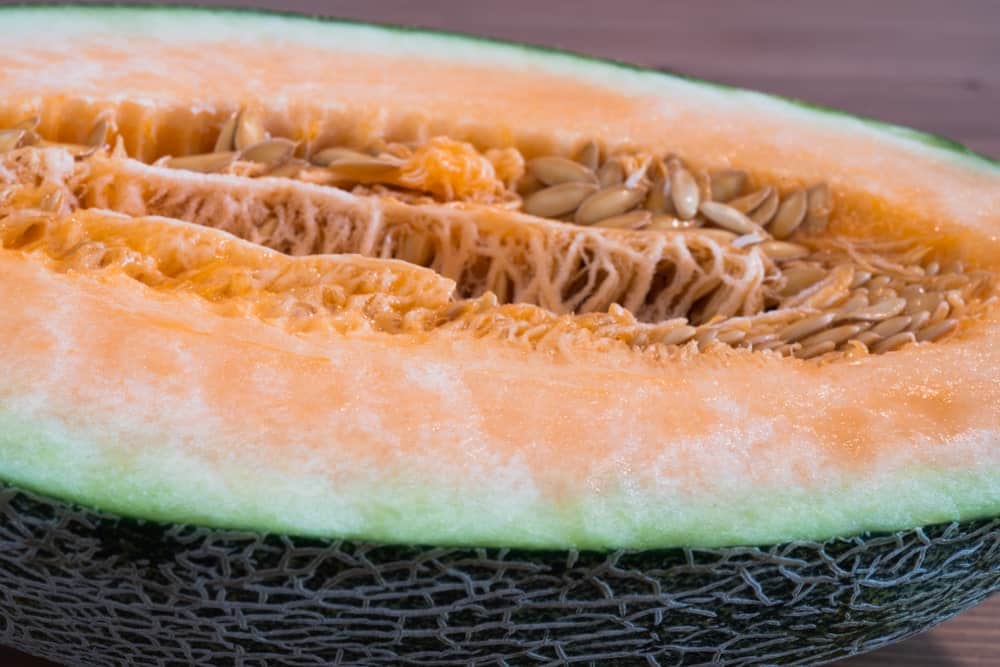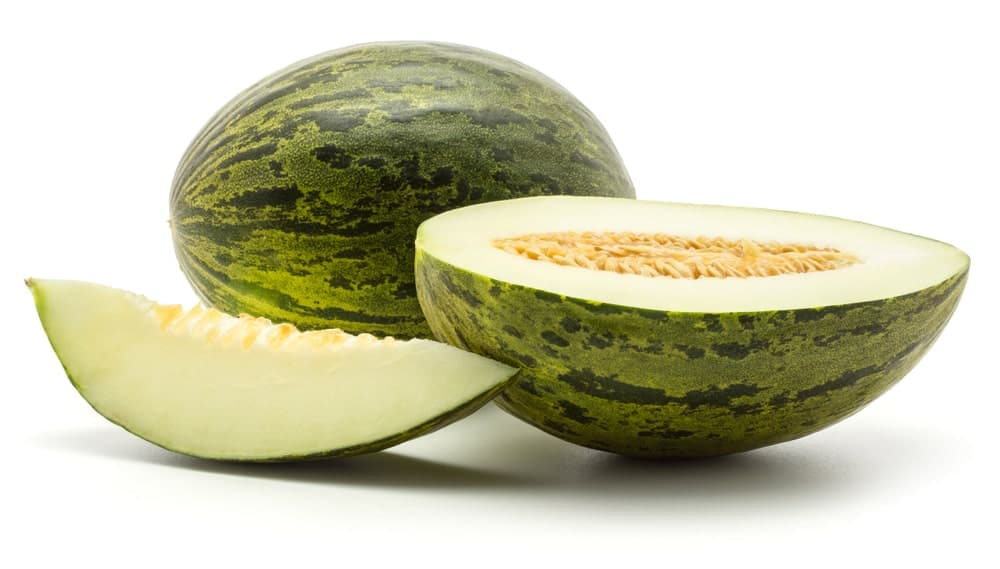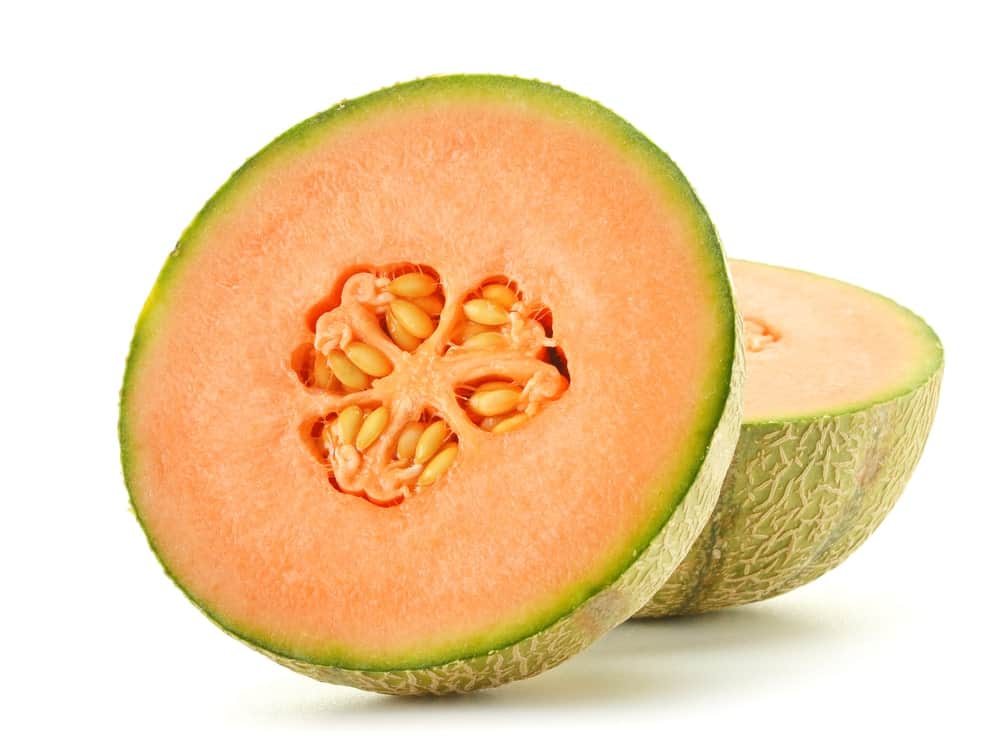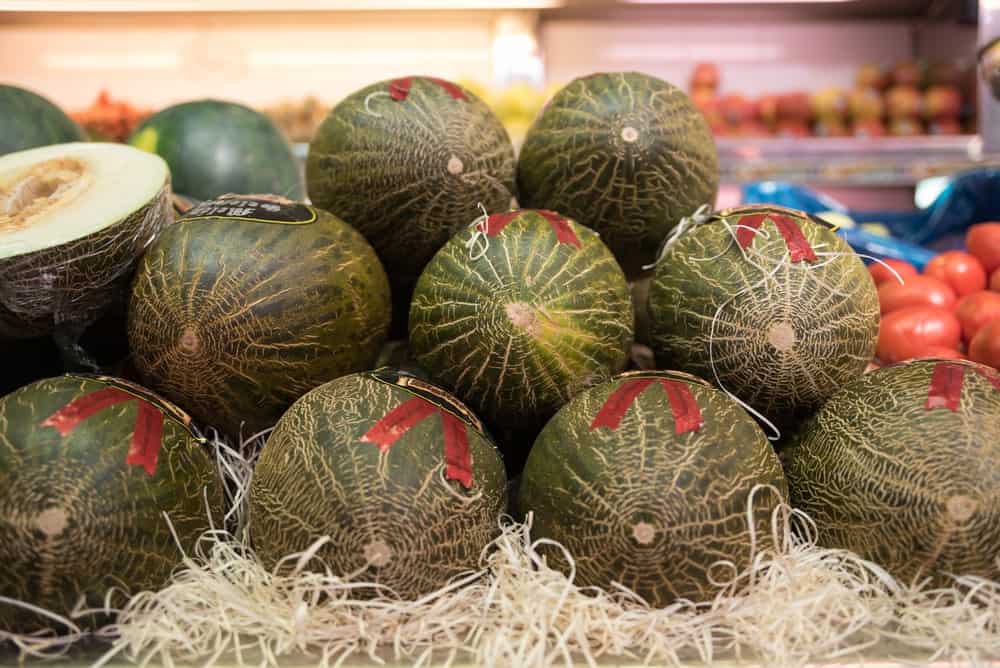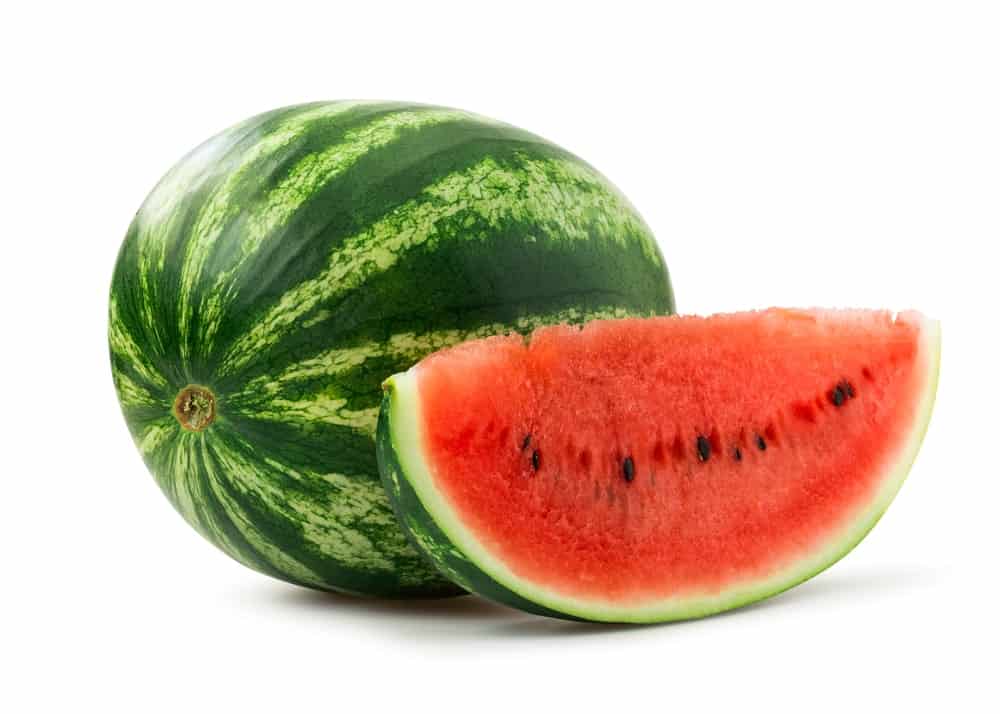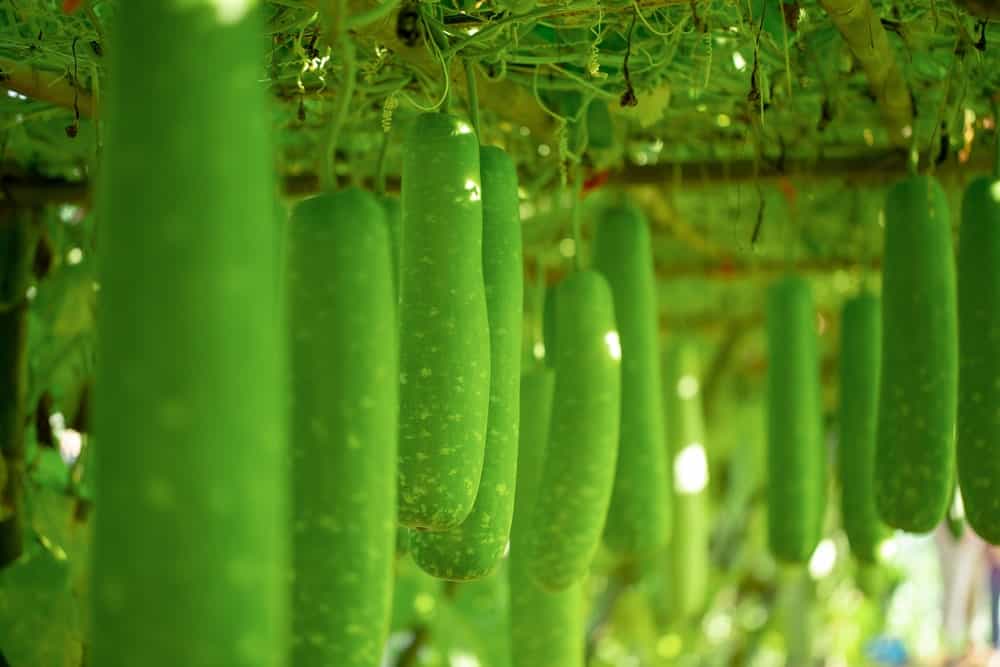Discover everything you ever wanted to know about all the different types of melons. Learn where they come from, how they taste, what they look like – and more!
The word melon describes a huge variety of different types of fruit from all around the globe. Each type of melon has its own origins, flavors, and appearance.
Melons are also some of the oldest types of fruit that we still eat today. They’ve been around since 2000 years B.C. when the Egyptians cultivated them. So you can expect in that period of time that there will be different variations of this fruit with each passing civilization and culture that cultivated it.
So far, I have found that there are 38 distinct types of melons. Read on to learn about each unique variety.
The 38 different types of melons
You probably already know about watermelons and honeydew, but what about casabanana? Let’s look really closely at all 38 types of melons from around the world – their shape, taste, how people eat them, and where they grow.
1. Ananas
Ananas is a type of older melon dating back to the 1800s. It has an oval shape with soft flesh.
How it tastes depends on the temperature of the climate when they are harvested. The Ananas melon tends to be sweeter in warmer climates and can yield slightly spicy flavors in colder ones. Anana melons are grown in the Middle East region and are distributed primarily through seed catalogs for local farmers.
2. Apollo
A delicate fruit with a smooth, creamy texture, this delicious melon contains a large amount of water and is a melon hailing from Malaysia with a bright, eccentric color. Those fruit lovers who want to enjoy a tropical-tasting melon that’s fresh and juicy are sure to appreciate the Apollo melon.
People usually eat it as a dessert or cut it up and add it to their salad.
3. Autumn Sweet Melon
This tiny round melon contains a vibrant golden-yellow color with white flesh and is small with a sugary sweet taste. The flavor is bursting with watery sweetness, making it especially delicious for juicing. Autumn sweet melon grows in the same areas as honeydew in semi-arid conditions.
4. Bailan Melon
The Bailan melon originates in China, where it is extremely popular. It’s also known as the Lanzhou honeydew melon because of its birth in Lanzhou, China. It has bright yellow skin with white flesh on the inside.
These types of melon are a form of honeydew that grows in southern France and Algeria. It is very nutritious and is said to be a miracle fruit in improving digestion and cooling the body down.
5. Banana Melon
On the outside, this melon appears to resemble an enlarged banana, which is why it’s called a “banana” melon. On the inside, the peach-orange color fruit flesh can be compared to that of a cantaloupe but with less flesh.
This melon introduced itself in the US in 1883 and has since produced many seed catalogs. The banana melon contains a spicy sort of savory sweetness and has a fragrant banana aroma.
This melon is said to have a longer shelf life than other melons, which makes it an ideal go-to fruit. The banana melon is an heirloom and grows best within the Northern region of the United States.
6. Bitter Melon
Used in dishes within India and Asia as a vegetable due to its eccentric flavor kick, bitter melon has a bitter wild tropical taste. It contains powerful medicinal benefits for aiding in diabetes and as a digestion ailment.
It has a very unique color and shape that actually looks like a bumpy cucumber.
This melon is native to Southeast Asia and is grown in tropical climates, primarily in the Caribbean, East Africa, Asia, and South America.
7. Canary Melon
The Canary melon is also known as the “Spanish melon.” It originally comes from Europe but is more commonly cultivated in parts of Asia, including South Korea and Japan. They are found to grow in tropical climates and especially in the region of San Joaquin. In the US, California and Arizona are where they are typically grown.
While these melons are indeed sweet, they are also known for their mildly tangy flavor.
The name canary melon comes from the bright yellow skin on the outside and yellow seeds on the inside. The white flesh is a stark contrast to the vibrant yellow exterior.
8. Camouflage Melon
Even though the skin of this melon has an appearance and smell that resembles that of watermelon in likeness, it actually tastes like honeydew. This melon is also known as the “Santa Claus melon” or the “Christmas melon” due to its harvest season peak being during the month of December.
They are grown in Brazil and Central America and within the US, Arizona, and California.
9. Cantaloupe (American)
The American cantaloupe that grows within the US primarily grows in California, Texas, Arizona, and Colorado. This Cantaloupe (American) is said to, in all actuality, be a muskmelon and not the original cantaloupe.
High in antioxidants and vitamin A, this nutrient-rich infused melon contains a deep orange-pink flesh on the inside, which is very thick and generous. This fruit makes for a versatile meal additive for salads and even ice cream.
10. Cantaloupe (European)
Noted to be the original authentic Cantalope, this cantaloupe actually contains an outer green skin as opposed to the brown color of what’s known as the “American Cantaloupe.” This cantaloupe is said to be less potent in flavor than its American counterpart, which is actually a musk melon.
European Cantaloupe is more difficult to grow and, therefore, not found within the US commercially. To find this authentic Cantaloupe, you will have to search for it in Europe and the Mediterranean, purchase seeds, or find a local farmer who grows them.
11. Casaba Melons
Casaba melons are a type of musk melon that is closely related to honeydew but mildly sweet when compared to other types of melons. It is a winter fruit with a bright or pale yellow hue to the outer skin.
Casaba melons have an excellent shelf life and contain nutrients that are good for the immune system, heart, and brain function. Native to Asia Minor, they are grown in South America and the Southwestern part of the U.S., primarily Arizona, and California.
 12. Casabanana
12. Casabanana
This thick, elongated fruit is said to be within the melon family but looks similar and tastes similar to a cucumber or squash. This South American melon grows under high temperatures and on a vine.
Purple Casabanana favors eggplant in shape and color and has been cultivated in Latin America and southern parts of the United States. The melon is said to smell like a melon yet has a subtle banana flavor.
13. Charentais Melon
The Charentais melon is a pleasant-smelling fruit that originated in France in the 1920s as a refined variation of cantaloupe. Mostly grown nowadays in the North African region, there are only a few select locations in the United States that offer Charentais melon production.
It has a beige skin with vertical green stripes and has an even musky note. People that enjoy this melon rave about the smooth texture and sweet flavors.
14. Crane Melon
This unique melon was developed by Oliver Crane in California and is a melting pot of several different melons, which include the Japanese, Persian, Ambrosia, and White melon. Due to its complex hybrid makeup, Crane melon has a diverse taste and is even farmed in specific soil and conditions to yield this unique crossbred fruit.
This melon is a rare one that is not found in grocery stores due to its distinct method of harvesting and does not have the shelf life to be distributed. Fortunately, Crane melon seeds can be purchased online for those who want to have a go at growing this complex variety.
15. Crenshaw Melon
This is another hybrid melon, consisting of a fusion between the Persian and Casaba. The melon is a musk melon engineered into several varieties, including honeydew. The Crenshaw melon, like other muskmelons, originated in Iran and has been since cultivated all over, including India and Afghanistan.
This melon has a wonderful sweet flavor with a hint of spiciness. While the taste of this melon is fascinating, the fiery red-orange color of this fruit is one of a kind, and its vibrant appearance is striking to the eye.
16. Cucamelon
This distinctive Mexican and Central American melon has the appearance of a tiny watermelon visually. Still, the taste of the melon is closer to a vegetable, like a cucumber, with a slight sourness that is similar to a pickle.
17. Galia Melons
This melon is the product of a wonderful marriage between cantaloupe and honeydew. This melon originates from Israel and is packed with a great deal of folic acid and vitamin B. With amazing healing properties, the Galia melon can assist with weight loss when incorporated into the diet.
Galia melon is also known to promote kidney health and support the immune system, as well as fight cancer cells.
18. Gac Melon
This tiny-sized melon is found in Southern China, Northeast Australia, and sometimes Thailand. The fruit has an odd name to match its peculiar appearance, similar to the shape of a football with a deep orange color and a wart-like, thorny surface.
The melon has a slightly tropical taste that can be described as a tangy sweet spiciness. This fruit is hard to come by with a short harvest season – just February through December.
19. Golden Langkawi Melon
Golden Langkawi melon (also known as the Golden Honeydew melon) gets its name from its origin in Langkawi, Malaysia. Its harvesting 35 days after the flower appears is indicated by its skin color changing from white to yellow.
20. Golden Prize Melon
This oblong-shaped melon has a rough yellow skin that is thick, with its inner contents a bright orange. The tough and thick skin of the Golden Prize melon effectively protects and preserves the sweet taste of the fruit.
They originated in Langkawi, Malaysia, and grow best in warm climates.
21. Hami Melon
Hailing from China over 700 years ago is a kind of musk melon that looks very similar to that of a cantaloupe. This melon is a nice subtle sweet, but if not ripened enough, the sweet flavor tends to be less noticeable.
22. Honey Globe Melon
This melon is a phenomenon in the category of melons with its superior ability to make a high count of natural sugars. The fruit smells of honeysuckle and has a shelf life of 7 to 10 days off the vine if kept in a cool dark area.
The vines of this fruit are extremely durable and prevent early dropping of the fruit, which makes this melon yield a high harvest.
23. Honeydew Melon
This is a very well-known melon that is easy to find at your local grocery store.
It is a musk melon that is at its sweetest when left on the vine until its sugar content is at its highest. When this melon is taken off the vine, it will no longer ripen to the point of producing more sugars.
The melon is high in vitamins B6 and C and has a high count of potassium and fiber.
24. Horned Melon
Also known as “Kiwano melon,” it’s a fruit high in magnesium and vitamin C. This melon has a prickly outer surface and inner portions made up of a lot of seeds that are infused into the fruit itself.
The inner flesh of the fruit contains a deep green jelly-like content, hence another nickname for it – jelly melon. The fruit tastes similar to a vegetable but has a mildly sweet taste with slight sour undertones.
25. Jade Dew Melon
Visually, the Jade Dew melon has a dewy soft-toned white color with a spring grass green coloration throughout the inside portion of the outer skin. The inside is a soft yellow fruit with a sweet flavor and crunchy texture.
This super-sweet melon grows all over the US and thrives in direct sunlight.
26. Kantola Melon
This bitter-tasting melon is known as “spiny gourd” and is incorporated into many delicious Indian recipes such as soups and curries. This fruit is versatile when used in many dishes – popular ways to enjoy Kantola melon are to stir fry or pickle it.
This melon has a similar taste to “bitter melon” and is high in fiber and vitamins. This fruit is also high in vitamin C and Folate and is said to help with Kidney stones.
27. Korean Melon
Coming from East Asia, this melon contains a juicy white fruit that is said to be difficult to harvest due to its vulnerable outer skin. The fruit’s exterior is sensitive and highly susceptible to bruising and burns easily in the sun.
The fruit is worth the hassle, though, with its sweet-savory taste similar to honeydew melon and pear.
28. Maroon Cucumber
This small melon tends to vary in appearance as it can look like a small watermelon with spikes or come in a lime color with spikes. Maroon cucumbers somewhat resemble a cactus and have a taste that can be compared to a cucumber.
This melon grows on a vine and originates in Africa but has been cultivated in many places around the world, such as Puerto Rico, Mexico, Dominican Republic, Venezuela, and the American Virgin Islands.
The Maroon Cucumber can be also found in the US and cultivated in Florida, California, Massachusetts, Montana, Georgia, Oregon, Texas, New York, Minnesota, Washington, and Wisconsin.
29. New Century Melon
This melon is found in Taiwan and is related to the Chinese Hami melon from Northwestern China. This luscious fruit has a light orange coloration inside and is delightfully sweet with a 14% sugar content count.
This fruit is noted for having disease-resistant properties, which make it great for planting.
30. Santa Claus Melon
Santa Claus melon is another name for the Christmas melon, a winter fruit derived from Spain and imported from South America.
This melon is in the muskmelon family and tastes sweeter than honeydew and cantaloupe. The foot-long Santa Claus melon looks a lot like a watermelon on the outside.
31. Select Rocket Melon
This melon originally came from New Zealand and has been cultivated all over. This fruit is usually a substitute for the more popular “Sky Rocket melon,” yet the fruit still is a tasty treat. After all, it is said to have been engineered as a product of the Sky Rocket melon.
32. Sky Rocket Melon
This melon takes 65 days to be harvested and has a white and green webbed outer skin. This melon is not a hybrid and has not been genetically modified, but instead is a product of epigenetics.
Originally packaged in New Zealand and distributed all over, you can sometimes find this odd melon in farmer’s markets in the US, or the seeds can be bought via the web for gardeners.
33. Sprite Melon
This sweet melon comes from Japan and is a result of a hybrid from the Honeydew melon. This melon is said to be about 30% sweeter than every other type. It is compared to honeydew but sweeter, so this juicy fruit is often eaten for dessert.
This melon has been cultivated in Eastern North Carolina since 1990, produced from June through September, and can be found there locally at farmer’s markets.
34. Sugar Melon
This is a rather small melon from the cantaloupe family with a 14% sugar content. The sweet melon fruit is the candy of melons with its orange center where the high sugar count really shines. The taste is like a sweeter cantaloupe with a creamy texture.
This melon can be found growing in Texas and located in Walmart locations across the United States.
35. Ten Me Melon
One of the most expensive melons available for purchase, this tender sweet melon is worth every cent. The Ten Me melon is a bright pale yellow when ripened and has a high-quality fresh taste that is unrivaled.
Finding this melon can be difficult, but accessibility to seeds is fairly easy to find online.
36. Valencia Melon
This melon has a dark forest green color with a white inner fruit with a creamy texture. This incredible melon is said to have come from Italy and has a resistance to most insects and rotting, giving it an impressive shelf life. It’s considered a winter melon because it can be stored all season long.
The fruit is very sweet with ginger notes. The Valencia melon is said to be another name for the Honeydew melon and is grown in France, Algeria, and China.
37. Watermelon
Everyone knows what a watermelon is! It’s super popular in the US in the summertime. Native to West Africa, these types of melons are actually a favorite all around the world.
The fruit is made up of 92% water and has a sweet taste that makes it a refreshing appetizer during the summer season. Not only is it luscious and delicious, but it’s filled with a ton of nutrients that the body needs to prevent illness.
Watermelon is prevalent abroad in China but can be found locally in the US and grown in Texas, Georgia, California, and Florida.
38. Winter Melon
This melon is an obvious winter season melon, hence the name, and is a highly popular ingredient used in Chinese cuisine. The melon is a honeydew variety and has a generous size but a rather bland taste.
Although not the most flavorful of melons, when cooked into soups, it takes on a soft texture that pairs well with spices and adds well to dishes.
This melon originated in Ancient Egypt but then made its way to Europe. Today this melon is grown in all parts of the world, including America, Asia, and Australia.
FAQs about types of melons
Here are some questions people often ask about the different types of melons.
What is the most expensive melon in the world?
The Yubari King and Densuke Watermelon are among the most expensive fruits in the melon family. These fruits are more expensive due to the demand for their insanely sweet taste and the fact that they only grow in specific regions of Japan.
What is the sweetest type of melon?
Many agree that honey globe melons are the sweetest type of melons because 15% of their weight is made of sugar.
Which melon is the healthiest?
Surprisingly, watermelons are some of the healthiest types of melons and have the least amount of calories. They are also high in the antioxidant lycopene, which is linked to a decreased risk of cancer and heart disease.
Is melon good for diabetics?
Yes, some melons can be an excellent choice for diabetics, in moderation.
So, there you have it! Everything you have ever wanted to know about all the 38 types of melon out there. Which one will you try next?

